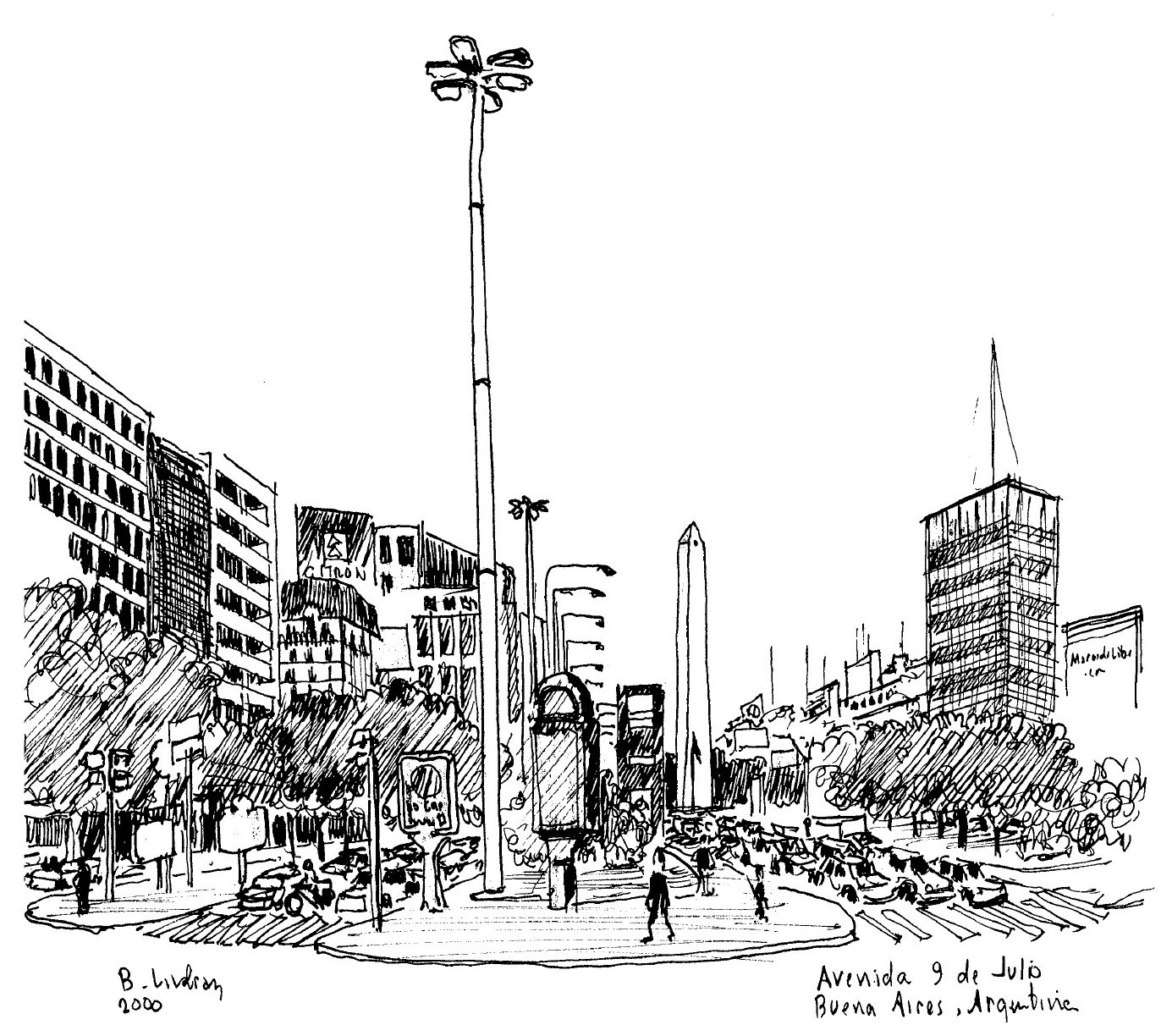AVENIDA 9 DE JULIO
Buenos Aires, Argentina
Avenida 9 de Julio is a major avenue in Buenos Aires, Argentina. Its name commemorates Argentina's Independence Day (July 9, 1816). The avenue runs from the Retiro district in the north to Constitución station in the south, and is about a half mile to the west of the Río de la Plata waterfront. The avenue consists of 12 lanes, six in each direction. Its north end is connected to Illia Expressway, which connects downtown with the domestic airport in Palermo and to Libertador avenue, which serves northbound traffic. Its south end is connected to the 25 de Mayo toll way, serving the west side of Greater Buenos Aires and Ezeiza airport. The main landmarks along the avenue include the Obelisk, Plaza de la República, and the Statue of Don Quixote.
The avenue's width is unusual due to the fact that it spans an entire cuadra, the 350 feet distance between two streets in the checkerboard grid of the city. This is greater than the equivalent Manhattan street spacing. The avenue was first planned in 1888 and named Ayohuma. Work started on 9 July 1937. The main stretch of the avenue was completed in the 1960s. The southern portion was completed in 1980 as part of the construction of the toll way. This work required massive demolition in the area next to Plaza Constitución and forced the relocation of thousands of residents. The boulevard has become the only major traffic route through the city center.
While I worked on this sketch, a young lady took a seat on the bench beside me, and was a little closer than “my space” would allow. I knew this was not the place to work on my Argentine Tango. I finished the sketch, and moved on.
